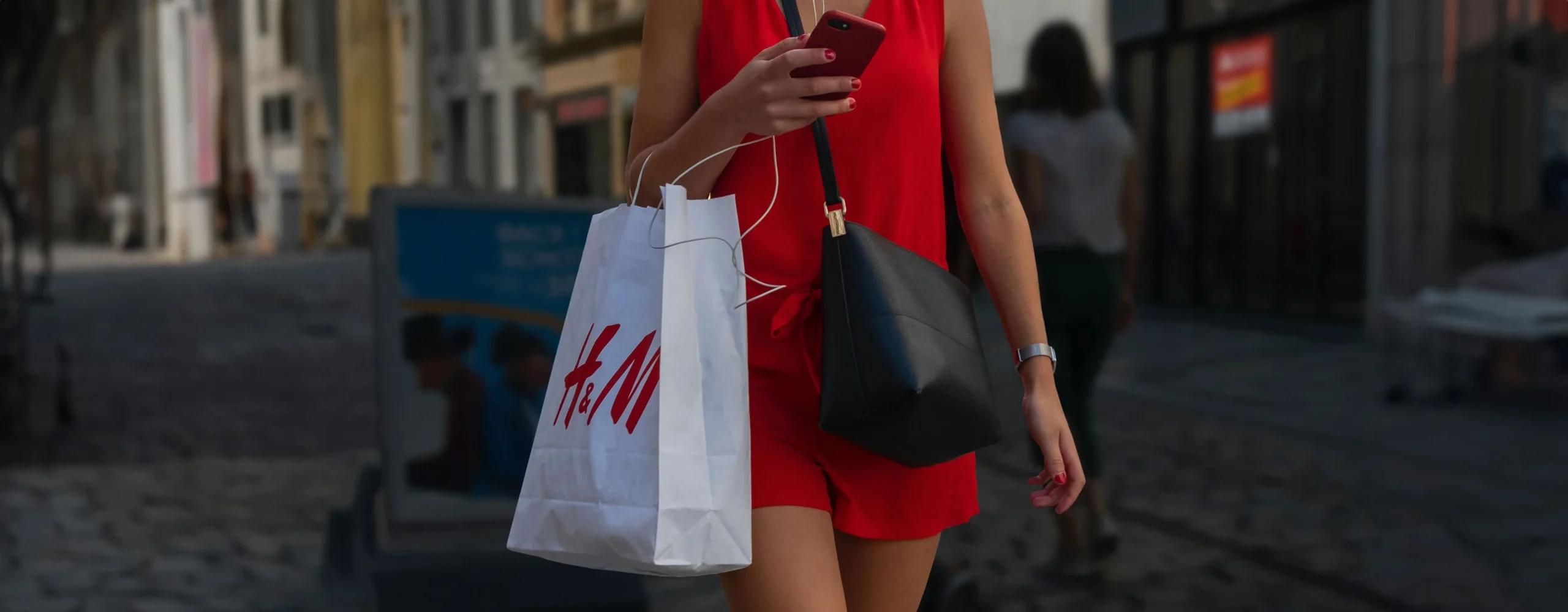
“I can’t repeat this dress; I’ve already posted pictures wearing it.” or “Oh, this color looks like a new trend; lemme go buy one for myself.” We are all familiar with such sentences and unconsciously try to find new reasons to go shopping. Well, we now live in a time when every new event calls for a new outfit. A few steps down the lane or a few clicks on your tab will bring you closer to a never-ending heap of trendy clothes offered by the best fashion brands at the most affordable prices possible.
How does this system work? Whom does it affect, and how bad? Is overbuying problematic for your wardrobe, bank account, or the earth? With the latest trends changing at the speed of a double tap and clothing being disposed of overnight as a Snapchat story, the rise of fast fashion has revolutionized how we approach fashion and style. Hence, let us dive deep into how this started and discover the true impact of our choices on the planet and the people who make our clothes.
History of Fast Fashion
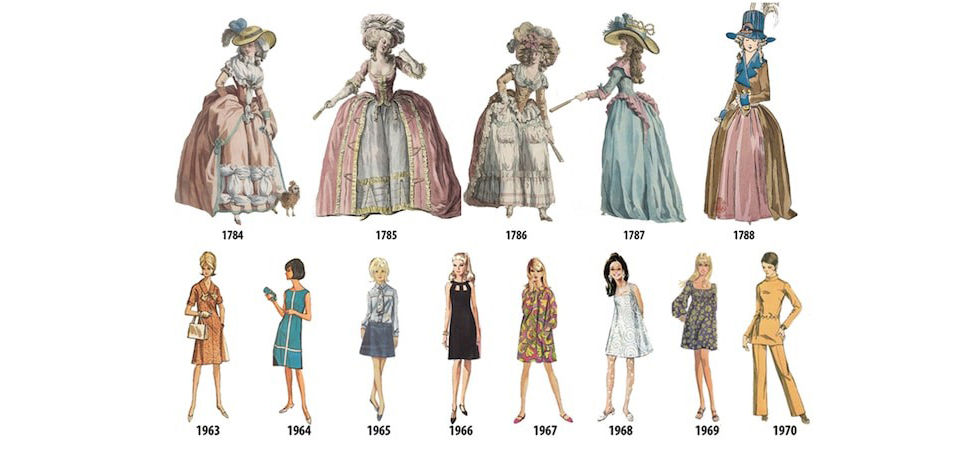
What is fast fashion? Before diving deep into the history of fast fashion, let us first understand the fast fashion definition in simple terms. As we know it today, the fast fashion business model is rooted in rapid production and affordable clothing to meet consumer demands that imitate current high-fashion trends and styles.
The origins can be traced back to the 1980s with the development of a manufacturing model known as “quick response” in the United States; its story truly began during the Industrial Revolution in the 1830s with the invention of the sewing machine. Before this revolution, fashion was inherently slow-paced.
The cultural revolution of the 1960s marked a turning point, transforming fashion into a means of protest, expression, and experimentation. Fashion trends evolved more rapidly, reflecting societal changes and individual expression. However, it was during the 1990s that fast fashion accelerated its pace. Retailers introduced trendy, cheaply-priced, and poorly-made clothes weekly, matching the breakneck speed of consumer culture.
How does Fast Fashion Work?
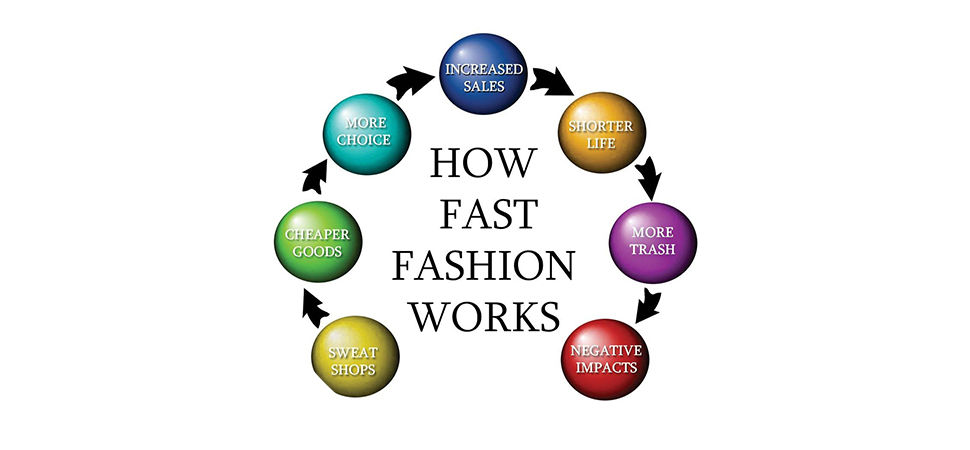
Fast fashion is a business model prioritizes speed and affordability over quality and durability. The process starts with trend forecasting, where designers and retailers monitor runway shows, street styles, and social media to identify the latest styles. They then produce these styles quickly and inexpensively, using cheap materials and labor.
These clothes are then distributed to stores or sold online, priced low to attract consumers looking for trendy pieces at affordable prices. The goal is to quickly sell large volumes of clothing rather than focusing on long-term sales or customer satisfaction.
This clothing industry also involves outsourcing manufacturing to low-wage countries, utilizing low-cost materials, and maintaining an efficient supply chain for frequent inventory turnover. Fast fashion’s impact extends beyond consumer accessibility, raising concerns about its detrimental effects on garment workers’ rights, dangerous working conditions, and environmental sustainability.
Is Fast Fashion Really that Bad?
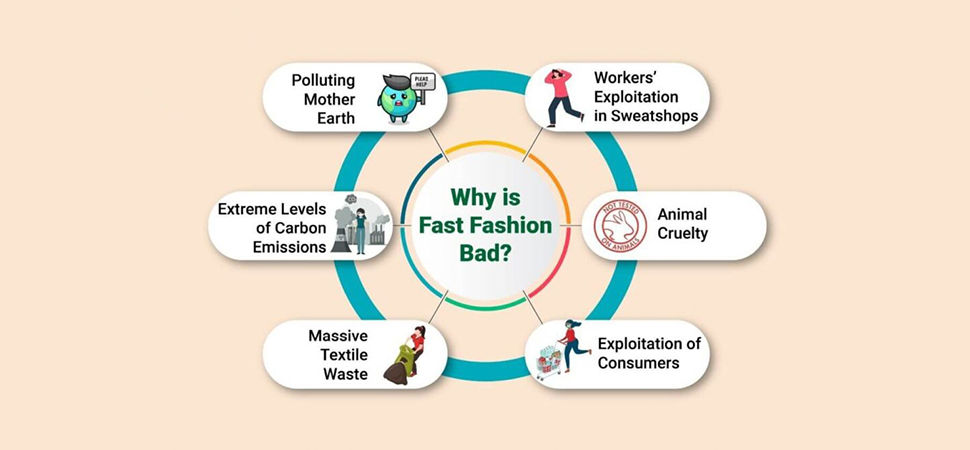
The short answer is—Yes! The fast fashion environmental impact is detrimental because of its severity on how it impacts the earth and its natural resources. From an environmental perspective, it is the second-largest consumer of water and contributes nearly 10% of global carbon emissions, leading to a significant ecological footprint. The mass production of cheap, stylish clothes contributes to major environmental issues, including textile waste and resource depletion.
Socially, fast fashion is criticized for its negative social impacts. It fails to promote decent working conditions, gender equality, diversity, or inclusivity, leading to concerns about labor abuse, including cases of child labor in the supply chain.
The fashion industry’s focus on rapid turnover and cost-cutting measures often leads to exploitative labor practices, creating an ethical dilemma. The negative consequences of fast fashion certainly outweigh its affordability, prompting a growing movement towards sustainable and ethical alternatives in the fashion industry.
Brands Leading the Change
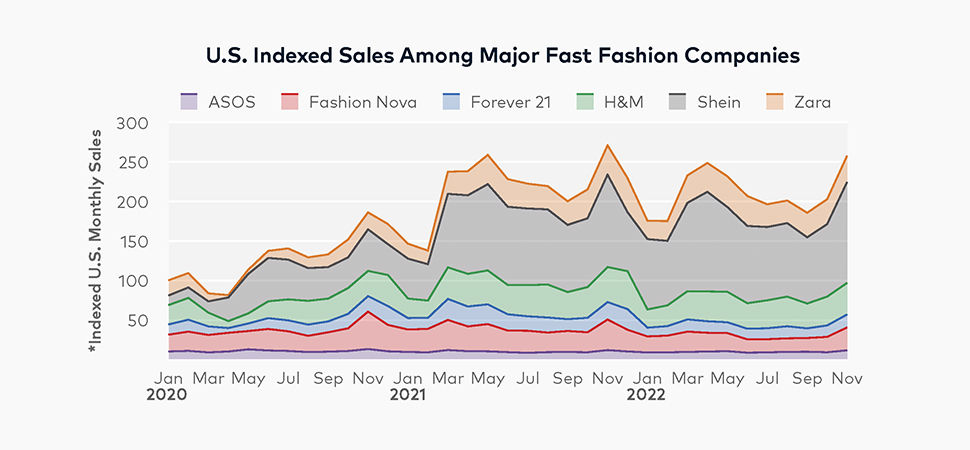
Several forward-thinking brands have recognized the need for change and are embracing sustainability, aligning their practices with eco-friendly values. One of the notable brands committed to a circular future is H&M. Which aims to achieve full circularity by 2040. By 2030, they aspire to use 100% recycled or sustainably sourced materials, showcasing a dedication to reducing their environmental footprint.
Another notable example is the parent company of Zara, which has pledged to explore new recycling practices and sustainable fibers. This move reflects an acknowledgment of the environmental impact of fast fashion and a commitment to finding more sustainable solutions.
Fashion without the Fast Lane: Sustainable Alternatives

Various sustainable fashion alternatives have emerged in response to the environmental and ethical concerns deeply associated with fast fashion brands. These alternatives prioritize ethical practices and environmentally conscious production methods. Key sustainable alternatives include:
- Sourcing Sustainable Materials: Wear clothing from materials grown and harvested sustainably, such as organic cotton, hemp, linen, wool, and semi-artificial fibers like Tencel.
- Supporting Ethical Brands: Opt for clothing from ethical and sustainable brands that prioritize fair labor practices and transparency and use environmentally friendly materials. Brands like Patagonia, Boden, and Kotn are known for their ethical alternatives to fast fashion.
- Choosing Timeless Styles: Instead of chasing fast-changing trends, consider investing in timeless, classic styles that do not go out of fashion quickly. Sustainable brands like Everlane often focus on creating durable and enduring wardrobe staples.
- Exploring Sustainable Fashion Brands: Discover sustainable fashion brands like Reformation, PACT, Amour Vert, Threads 4 Thought, Beckons, EcoVibe Apparel, Ocelot Market, and CHNGE. These brands prioritize eco-friendly practices and ethical production methods, offering a variety of alternatives for those seeking a slower, more sustainable approach to fashion.
While fast fashion provides accessibility to trendy clothing at an affordable price, it’s high time we, as consumers, become increasingly aware of the true cost associated with this model.
Adopting a more sustainable approach to fashion, including supporting ethical brands and choosing timeless styles, emerges as a conscientious alternative. If fashion could become an industry that balances style with responsibility, promoting ethical practices, it would comfort the environment just as a finely woven muslin fabric does to you.




